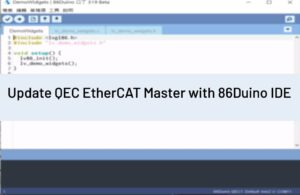[Arithmetic Operators]
描述
Addition is one of the four primary arithmetic operations. The operator + (plus) operates on two operands to produce the sum.
語法
sum = operand1 + operand2;
參數
sum: variable. Allowed data types: int, float, double, byte, short, long.operand1: variable or constant. Allowed data types: int, float, double, byte, short, long.operand2: variable or constant. Allowed data types: int, float, double, byte, short, long.
Example Code
int a = 5; int b = 10; int c = 0; c = a + b; // the variable 'c' gets a value of 15 after this statement is executed
Tips
- The addition operation can overflow if the result is larger than that which can be stored in the data type (e.g. adding 1 to an integer with the value 32,767 gives -32,768).
- If one of the numbers (operands) are of the type float or of type double, floating point math will be used for the calculation.
- If the operands are of float / double data type and the variable that stores the sum is an integer, then only the integral part is stored and the fractional part of the number is lost.
float a = 5.5; float b = 6.6; int c = 0; c = a + b; // the variable 'c' stores a value of 12 only as opposed to the expected sum of 12.1
語法參考主頁面
86Duino 參考的文本是根據 Creative Commons Attribution-ShareAlike 3.0 License,部分文本是從 the Arduino reference 修改的。 參考中的代碼示例已發佈到公共領域。



